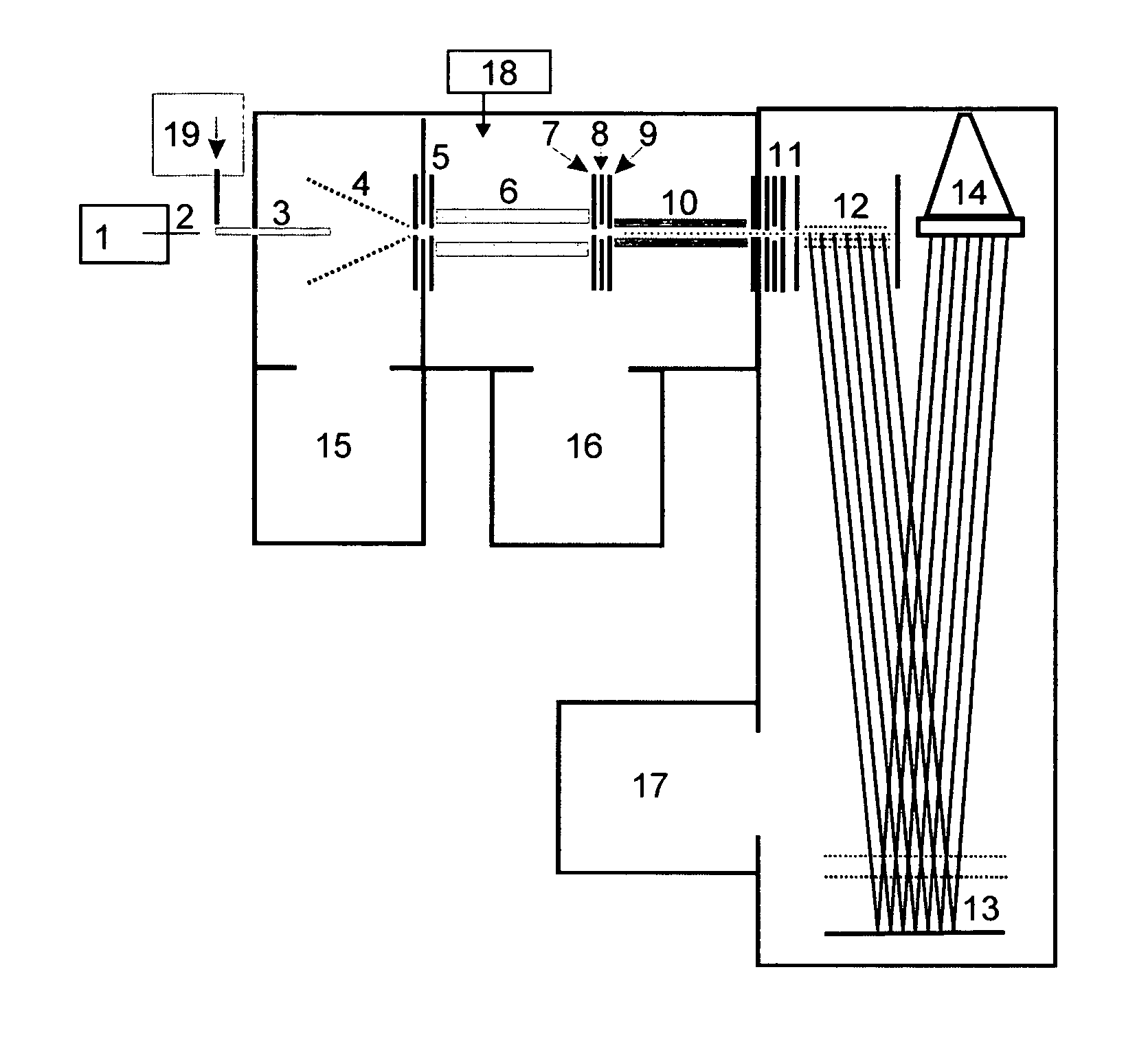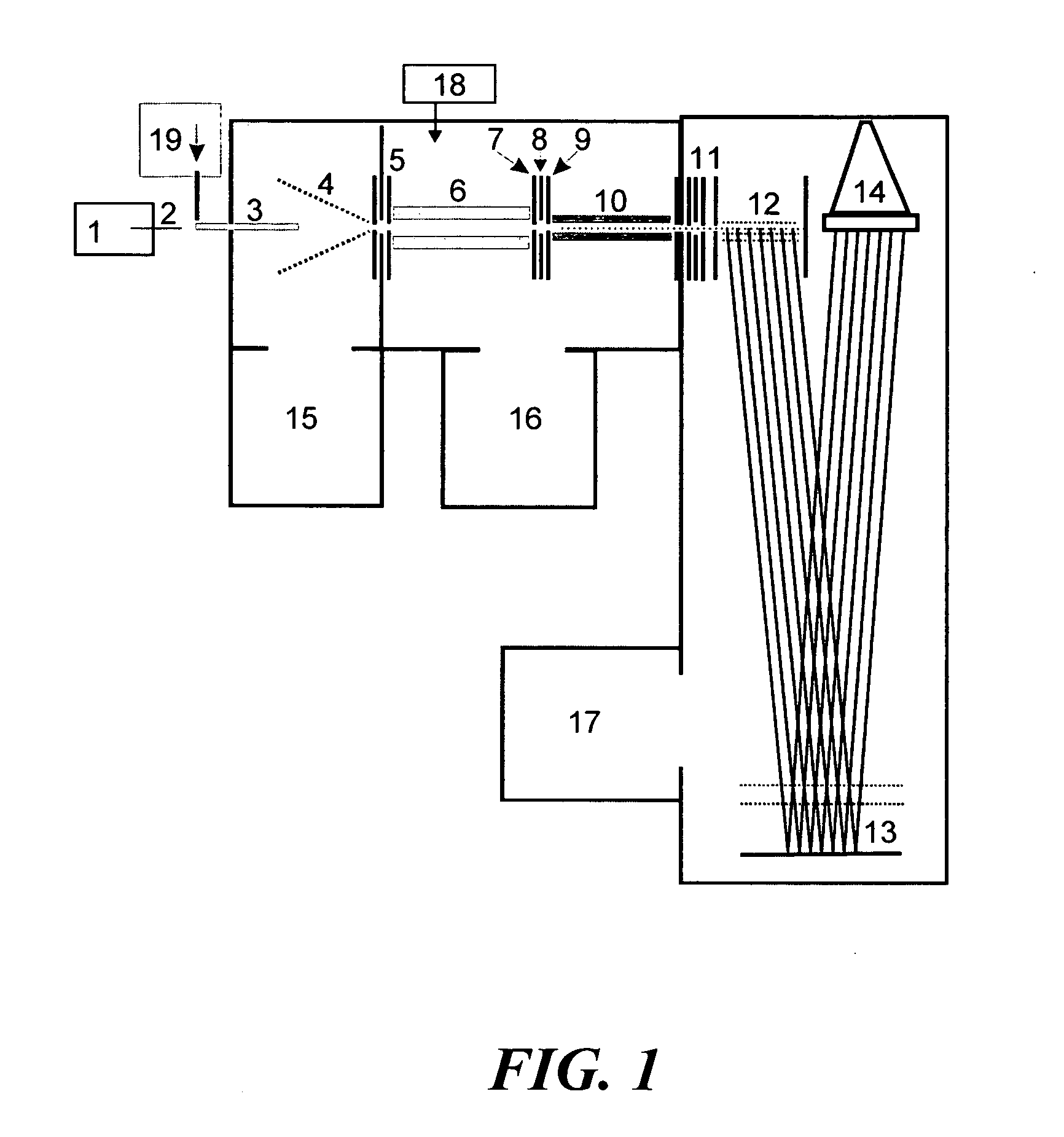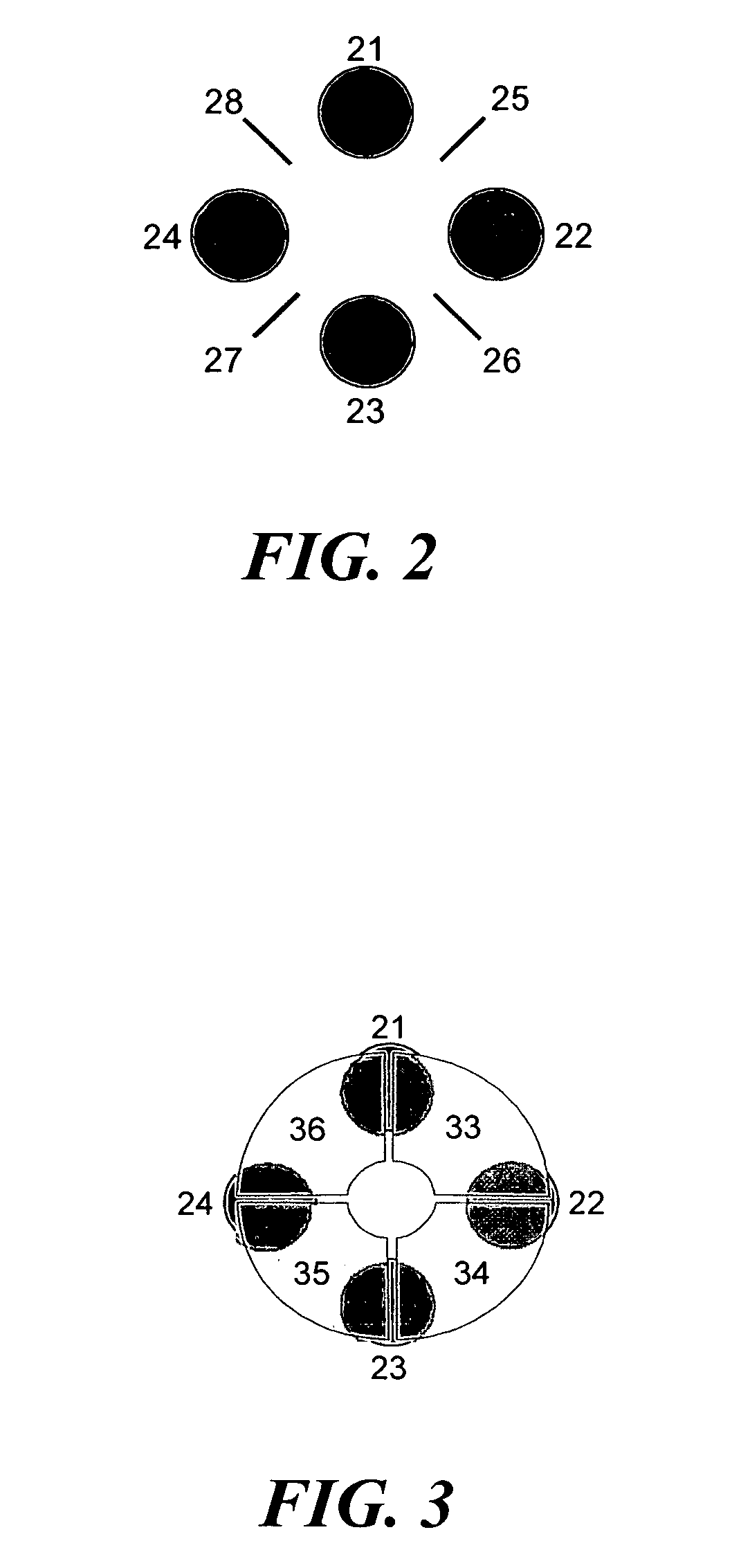Novel tandem mass spectrometer
a tandem mass spectrometer and mass spectrometer technology, applied in mass spectrometers, separation processes, dispersed particle separation, etc., can solve the problems of destroying all other ion species of ion mixtures and losing to further analysis, commercial tandem mass spectrometers exhibit always a relatively low sensitivity for the measurement of a multitude of substances from a sample, and achieve fast spectrum acquisition, high mass range, and high mass accuracy
- Summary
- Abstract
- Description
- Claims
- Application Information
AI Technical Summary
Benefits of technology
Problems solved by technology
Method used
Image
Examples
embodiment 1
Excitation by Split Lens Diaphragms
[0076] The apertured diaphragm of the lens system, which faces the pole rods, can be split transversely in either a linear or a cruciform shape and can also be supplied, in addition to the DC potential, with an alternating voltage which is either dipolar or circumpolar. It can thus be used for the radial excitation of the parent ions which are to be exported. There are three different forms of excitation here:
embodiment 1a
Excitation in the Plane through Two Pole Rods of the Storage Reservoir (“Conventional Excitation”)
[0077] In this case, the slit of the apertured diaphragm has an orientation which is parallel to the direction between two opposed pole rods (22) and (24), as shown in FIG. 4. This form of split apertured diaphragm with the halves (29) and (30) leads to an excitation of the ions in a plane created by the two opposed pole rods (21) and (23). This excitation is sufficient for a mass selective ion export, but it is not the optimal excitation.
embodiment 1b
Excitation in the Plane through the Gap Mid-Way Between the Pole Rods of the Storage Reservoir (“Diagonal Excitation”)
[0078] This form of excitation has a decisive advantage over the conventional excitation method described above. A split apertured diaphragm (31, 32) is again used, but the slit of the transverse split is now in the direction of the opposing gaps between two adjacent pole rod pairs, as can be seen in FIG. 5. With this type of excitation, the ions are brought into an oscillation path where the forced oscillations of the ions which are imposed by the RF voltage across the pole rods (the “driver RF”) do not occur in the plane of the secular oscillations, but at right angles to it. This means that, in the fringing field, the pseudo-forces which act outwards are achieved at smaller oscillation amplitudes than is the case with the conventional excitation. This makes it easier to export the parent ions; the export occurs at smaller excitation voltage amplitudes and smaller...
PUM
 Login to View More
Login to View More Abstract
Description
Claims
Application Information
 Login to View More
Login to View More - R&D
- Intellectual Property
- Life Sciences
- Materials
- Tech Scout
- Unparalleled Data Quality
- Higher Quality Content
- 60% Fewer Hallucinations
Browse by: Latest US Patents, China's latest patents, Technical Efficacy Thesaurus, Application Domain, Technology Topic, Popular Technical Reports.
© 2025 PatSnap. All rights reserved.Legal|Privacy policy|Modern Slavery Act Transparency Statement|Sitemap|About US| Contact US: help@patsnap.com



